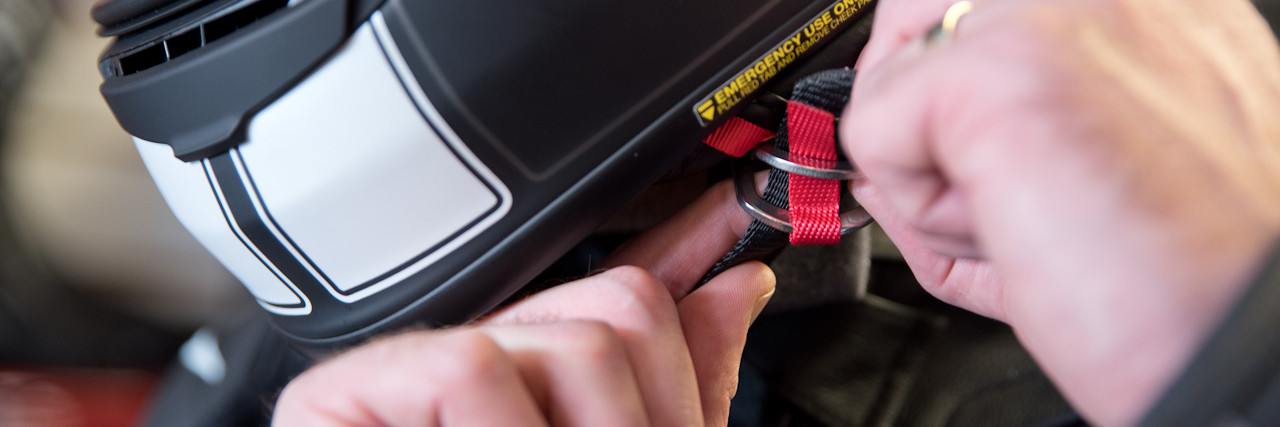Understanding safety standards
When choosing motorcycle clothing and helmets make sure everything conforms to accepted safety standards.
Standards in New Zealand
New Zealand is a small market with little local production. So, in the past, we’ve generally followed Australian and European Union safety standards for motorcycle gear. In the past few years Australia and New Zealand have built a new gear-testing regime known as MotoCAP.
This world-leading scheme sees examples of gear bought anonymously and off-the-shelf in Australia and New Zealand then subjected to thorough, scientific testing at an independent laboratory.
The scheme has now tested and reported on scores of different jackets, pants and gloves, so be sure to check the website as part of your selection process. Even if a specific item hasn’t been tested, a look through the test results will give you a very good idea of what to look out for on an equivalent.
A higher price doesn't mean higher protection
A higher price doesn’t always mean higher protection. Look for gear that has been approved to the relevant safety standards and that performs well in independent testing.
Standards for helmets
A number of international standards are accepted for motorcycle helmets used in NZ, including Japan’s JIS, America’s Snell Foundation plus Australian, British and EU standards. The full list is on the NZTA link below. There’s also a UK testing scheme called SHARP (Safety Hemet Assessment and Rating Programme) and, closer to home, an Australian equivalent that can help steer your choice.
Australia’s CRASH Motocap safety ratings helmet testing
A comprehensive list of approved helmet safety standards from NZTA Waka Kotahi
Helmet testing results on the SHARP Helmet safety guide website
Standards for jackets, pants and leathers
In theory, the European Standard for protective motorcycle clothing is EN13595 Parts 1-4, but most of the gear you see labelled as CE-certified or approved refers only to the armour.
MotoCAP star ratings are more reliable as a guide to the protection offered by a garment. You can also use knowledge from MotoCAP’s testing to help inform your choice. Look for triple stitching that folds the main stitching away inside the garment, and seam welding. Check what you’re getting by way of armour. Even if a jacket’s shoulders and elbows have CE inserts, the back might just have a non-protective foam pad.
Standards for impact protectors
Look for standard EN1621 on slip-in armour for shoulders, elbows and knees. There are three levels of protection. Level 3 (Extreme Protection) absorbs twice the energy of Level 1 (Basic) before transferring the same force.
Back protectors should be labelled EN1621-2. There are only two levels and the maximum force transferred is approximately half that of joint protectors. Standards here, though, are not the whole story.
Slip-in back protectors might pass the impact test but they are nowhere near as effective as ones worn separately, e.g a vest. These go right around the back of your rib cage and some shield your tailbone.
You see more and more chest protectors around nowadays, especially at track days, and EN1621-3 is the standard to look for. Again, with two levels.
Inflatable armour–both in the garment and separate vest-type–has filtered down from MotoGP and is becoming more widely available. It should display the EN1621-4 standard.
Gloves and boots
Gloves should meet CE standard EN13594; boots, EN13634. The new MotoCAP star ratings provide even more detail on how well a glove will protect you. Look for double closures on the wrists, quality stitching, scaphoid sliders on the ‘heel’ of the palm and extra protection (preferably plastic armour) for the knuckles.
Boots should have all-round protection with strong cups for heels and toes, plus a stiff steel shank in the sole.
Testing organisation SATRA outlines the different CE safety standards for protective gloves
The EU legislation relating to personal protective equipment




